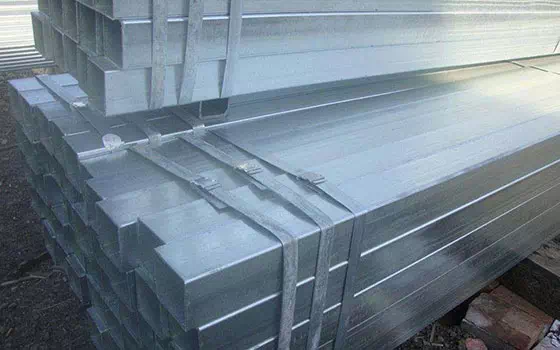Welcome to Shandong Zhishang Steel Co., Ltd.
Get a free quote quickly!
Lorem ipsum dolor sit amet, consectetur adipiscing elit. Donec id erat sagittis, faucibus metus malesuada, eleifend turpis. Mauris semper augue id nisl aliquet, a porta lectus mattis. Nulla at tortor augue. In eget enim diam. Donec gravida tortor sem, ac fermentum nibh rutrum sit amet. Nulla convallis mauris vitae congue consequat. Donec interdum nunc purus, vitae vulputate arcu fringilla quis. Vivamus iaculis euismod dui.
The interaction between magnets and galvanized steel is a topic that involves materials science and the principles of magnetism. First of all, we need to understand that the reason why magnets can adsorb certain metals is because these metals are magnetic, or they can be magnetized and attracted to magnets. However, as a non-magnetic metal, zinc does not attract magnets.
Galvanized steel is a special kind of steel whose manufacturing process involves plating a layer of zinc on the surface of ordinary steel. This process is usually done by hot dip galvanizing, in which the steel is dipped into a molten zinc solution that adheres to the steel surface and forms a protective layer. The main function of this layer of zinc is to provide anti-corrosion function and protect the steel from the external environment, thus significantly extending the service life of the steel.
Because zinc is a non-magnetic material, when the magnet is near the galvanized steel, the galvanized layer itself will not be attractive to the magnet. This means that if only the galvanized layer is considered, the magnet will not adhere to the galvanized steel. The reality, however, may be more complicated. If the substrate beneath the galvanized layer is magnetic steel, and the zinc layer is not thick enough to completely isolate the magnetic force between the magnet and the substrate, then the magnet may "stick" to the galvanized steel in this indirect way. This is because the magnet attracts the magnetic part of the substrate, which generates enough force to keep the magnet on the galvanized steel surface.
In the plating process, in order to improve the performance and appearance of galvanized steel, other surface treatment techniques may be used. For example, some galvanized steel may be further treated and covered with a black protective film, which not only provides additional anti-corrosion effect, but also improves the appearance of the product. However, this protective film is also usually non-magnetic, so it also does not affect the adsorption capacity of the magnet.
Whether the magnet will stick to the galvanized steel mainly depends on two factors: first, whether the steel under the galvanized layer is magnetic, and second, whether the thickness of the zinc layer is sufficient to prevent direct contact between the magnet and the magnetic substrate. If these two conditions are met, then it is possible for the magnet to be indirectly adsorbed on the galvanized steel through the magnetic substrate. On the contrary, if the galvanized layer is thick enough, or the substrate itself is not magnetic, then the magnet will not stick to the galvanized steel
Galvanized steel is a specially treated steel that is not magnetic, so it will not be attracted to magnets. This article will introduce in detail the definition of galvanized steel, the working principle of magnets and why galvanized steel can not be attracted by magnets.
First, let's understand the concept of galvanized steel. Galvanizing is a widely used method for corrosion protection of steel, which involves coating the surface of steel with a zinc material. The purpose of this is to prevent the steel from being corroded in the environment and extend its service life. Because galvanized steel has anti-corrosion, beautiful and acid and alkali resistance characteristics, it has a wide range of applications in the construction industry, automobile manufacturing, furniture production and other fields.
Next, we'll explore how magnets work. Magnets are objects made of materials containing magnetic elements such as iron, nickel, cobalt, and they have specific magnetic properties. Magnets are able to generate magnetic force because of the magnetic moment inside them, which is formed by the arrangement and combination of microscopic electrons in an external magnetic field. When a magnet approaches other objects, it creates a magnetic field around those objects, which in turn affects the microscopic electron configuration inside the objects, causing them to generate corresponding magnetic fields. This interaction between magnetic fields causes attractive or repulsive forces between objects.

However, galvanized steel is an exception, it is not attracted to magnets. The reason is that during the galvanizing process, the surface of the originally magnetic steel is coated with a layer of zinc, and iron atoms are combined with zinc atoms to form an alloy, which changes the magnetic properties of the steel and makes it lose its original magnetism. In addition, the physical properties of galvanized steel have also undergone some changes, such as its resistivity will increase and its heat conductivity will decrease. Therefore, although galvanized steel has a wide range of applications in the manufacturing industry, because it is not magnetic, it is not suitable for use as a magnet material.
In summary, although magnets can attract many types of metal, for galvanized steel that has been galvanized, magnets can do nothing. This phenomenon reveals the importance of a material's physical and chemical properties for its interaction with magnets.